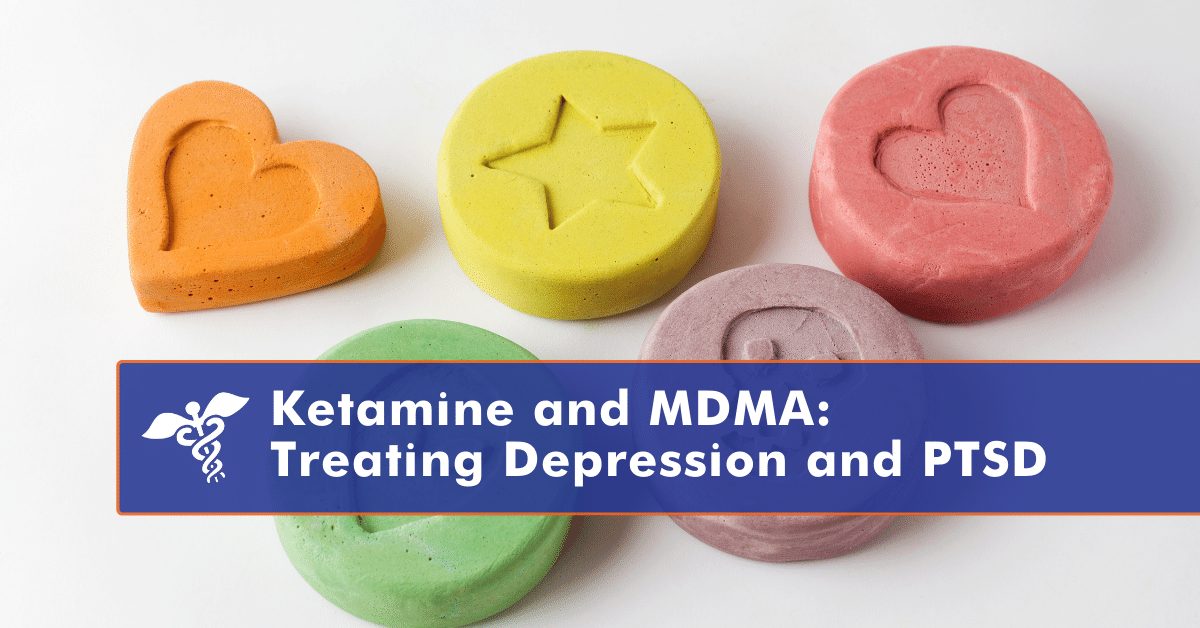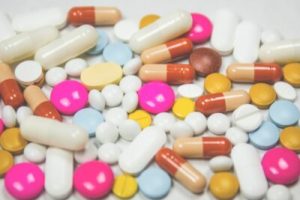
Written by Neha Ogale
Major depressive disorder (MDD) is among today’s most debilitating chronic illnesses, mental or physical. The World Health Organization (WHO) reports that over 300 million people worldwide suffer from MDD, but fewer than half receive treatment – the rates are as low as 10 percent (often lower) in some countries. Depression is a master of stealth cloaked in social stigma and misinformation: Silent yet ruthless in its destructive path, MDD claims nearly 800,000 lives to suicide each year, making it the second leading cause of death among people ages 15-29.

If MDD is a silent killer, then post-traumatic stress disorder (PTSD) is its wayward cousin: More sinister,
The evolution of treatments: We’ve come a long way since bloodletting
Depression has Taken Centuries to Decipher
Humans have been trying to explain bouts of the blues or “melancholia” since ancient times. For centuries, the sad mood, fatigue and feelings of hopelessness accompanying depression were thought to be a result of bodily fluids (especially “black bile”) or demonic possession. Not until the 17th century was depression even considered to be a disease of the mind. The idea that MDD could be a mental disorder was pioneered by an English neurologist named Thomas Willis, regarded by many as the father of neuroscience.
Ancient people’s bizarre explanations for depression were matched by their equally outlandish remedies. Induced vomiting or bloodletting – as in, cutting open the skin to supposedly let the “bad blood” out – were among some of the more gruesome approaches to treatment. Other, fairly innocuous (if fruitless) methods included diet, exercise and herbal remedies.
The first real venture into technology-based treatment came in the 20th century with the introduction of electroconvulsive therapy (ECT) in 1938. Also known as shock therapy, it was widely considered to be the only effective modern treatment for depression at the time. One round of ECT is effective in about 50 percent of people with treatment-resistant MDD. The procedure, however, may be accompanied by side effects such as memory loss, disorientation, nausea and muscle pain. ECT machines have been categorized high risk by the U.S. Food and Drug Administration (FDA), earning a place in the Class III category.
Some years later, scientists began their foray into pharmacological approaches to treating depression. In 1958, their efforts yielded the introduction of iproniazid: the first drug of the monoamine-oxidase inhibitor (MAOI) series. MAOIs prevent the enzymatic breakdown of norepinephrine, a neurotransmitter involved in emotional stimulation. Iproniazid was temporarily hailed as an effective treatment until it was found to cause liver damage in 1961.
However, hope was not yet lost: Just before iproniazid burst onto the pharmaceutical scene, another drug called imipramine was discovered to treat depression in 1957. It was the first drug discovered belonging to the class of tricyclic antidepressants; “tricyclic” refers to the three-ringed molecular structure of the drug. Its side effects were markedly less severe, though still present in the form of dry mouth and blurred vision among other discomforts.
Studying MAOIs and tricyclic antidepressants gave rise to the development of selective serotonin reuptake inhibitors (SSRIs). Serotonin is a neurotransmitter that regulates mood, appetite and sleep, and triggers hormones like oxytocin that are associated with feelings of trust. Scientists discovered that in addition to norepinephrine deficiency, depleted amounts of serotonin and dopamine (a neurotransmitter that produces feelings of pleasure) can cause depression. The first SSRI to hit the market was fluoxetine, better known by its brand name Prozac. Introduced in 1987, the drug became an almost instantaneous success, so much so that by 1990, 2 million people were taking it worldwide.
Three decades and five presidents later, the popularity of SSRIs has hardly declined: The Mayo Clinic reported that 70 percent of Americans take some type of prescription drug and approximately 13 percent are on antidepressants.
PTSD has Taken a much Shorter Path
PTSD is considered a comorbid disorder, which means that it often occurs in conjunction with other disorders. For example, a combat veteran with PTSD is likely to also suffer from depression, anxiety or alcohol/substance abuse problems. Unlike depression, however, PTSD is a relatively new entity in psychiatrics. It slowly began getting attention in the 1970s and 80s during the aftermath of the Vietnam War and the rise of the women’s rights movement.
The return of battle-hardened troops was instrumental in prompting recognition and awareness of PTSD, which was commonly referred to as “shell shock” to describe traumatized veterans of war. Meanwhile, women all over the country were growing emboldened: Scores of survivors found the courage to voice their harrowing accounts of domestic violence and sexual assault, horrors that had been previously swept under the rug in fear of retribution. The frenzied circulation of these reports sent shockwaves across the nation. In 1974, Ann Burgess and Lynda Lytle Holmstrom of the Boston Medical Center penned an article called “Rape Trauma Syndrome.” For the first time, the plight of women was featured in the public spotlight, further paving the way toward trauma awareness and intervention.
Finally, in 1980 the American Psychiatric Association (APA) added PTSD to its Diagnostic and Statistical Manual of Mental Disorders, Third Edition (DSM-III). Since then, the diagnostic criteria for PTSD have undergone several revisions. The most recent and consequential change appeared in the DSM-5, where PTSD was no longer classified as an anxiety disorder; it now falls under the category of trauma- and stressor-related disorders.
Once PTSD was officially legitimized as a psychiatric illness, the approach to treatment became much clearer. To reiterate from earlier, PTSD has a high rate of comorbidity, often accompanied by MDD. So, there was much less experimentation among psychopharmacologists in the search for the perfect chemical concoction: It was already available in the form of SSRIs, which remain the most common drug treatment for PTSD.
Still, drug interventions varied (and still do) case by case. In the past, benzodiazepines – tranquilizers, sleeping aids or anxiolytics – have been prescribed for rapid anxiety relief, but are associated with dependence. Antipsychotics are among some of the more useful drug treatments as they ease the agitation, dissociation and paranoia that accompany PTSD. Mood stabilizers, though less effective than antipsychotics, are also useful.
Cognitive behavior therapy (CBT), in conjunction with prescription drugs, is found to be the most effective long and short-term treatment. It focuses on identifying, understanding and changing thinking and behavior patterns, and usually lasts 12 to 16 weeks.
Exposure therapy is one form of CBT. It desensitizes patients to their trauma over time by exposing them to traumatic memories in a controlled environment. This might entail mental imagery, writing or visiting places that remind patients of their trauma. The use of virtual reality is gaining popularity as well. One non-CBT treatment that may be effective is stress inoculation training (SIT), which reduces anxiety by teaching coping skills like breathing retraining and muscle relaxation. SIT aims to teach patients to react differently to symptoms and triggers.
Ketamine: From clubgoers’ kryptonite to rapid-acting antidepressant
Though they have no doubt lined the pockets of pharmaceutical companies, antidepressants are not a miracle drug. They typically take four to eight weeks to start working; symptoms often worsen before starting to improve. As a matter of fact, only 35 percent of people taking SSRIs experience full remission and 30 percent are what psychiatrists call “treatment-resistant.” This means that 5 million people taking antidepressants do not respond adequately – if at all – to the available treatments.
The shortcomings of modern antidepressants coupled with a drive for innovation has led scientists to investigate novel methods of treating MDD. Their answer? Ketamine.

Even today, ketamine remains a somewhat popular choice among recreational drug users. In 2013, the National Survey on Drug Use and Health reported that 12 percent of people ages 18-25 had used ketamine in their lifetime, and 6 percent in the past year. So, it shouldn’t come as a surprise that ketamine is one of the most strictly regulated psychedelic drugs on the market today: The DEA classifies it as a Schedule III controlled substance.
How it Works
Drugs are exogenous substances, which means they occur outside the body. They are classified as agonists (meaning they act like or enhance the effects of certain neurotransmitters) or antagonists (meaning they block or counteract the effects of certain neurotransmitters). Ketamine is the latter: It blocks NMDA receptors (structures on brain cells whose membrane is permeable to calcium) for glutamate, an excitatory neurotransmitter involved in cognitive functions such as learning and memory.
The effects are almost immediate, appearing within ten minutes of taking the drug. Ketamine’s hallucinogenic effects last about 60 minutes when it is injected, and up to two hours when taken orally. These effects, however, are different from those produced by classic psychedelic hallucinogens. The specific dissociative state that comes from taking ketamine is characterized by perceived detachment from one’s body, stripping users of their grip on reality and causing them to exist in a strange, dreamlike state. High doses of the drug can induce schizophrenia-like symptoms such as hallucinations and delusions – this extreme state of dissociation is dubbed the “K-hole” by many users, who regard it as a particularly bad trip.
What the Research Shows
In 2013, the American Journal of Psychiatry published a study on the antidepressant efficacy of ketamine in treatment-resistant major depression. The researchers designed a double-blind, randomized controlled trial comparing the effects of a single infusion of ketamine to an active placebo in the form of the anesthetic agent midazolam. The researchers recruited 73 subjects with treatment-resistant depression experiencing a major depressive episode: a two-week period over which someone experiences symptoms of MDD.
The treatment group received one IV infusion of ketamine while the control group received one IV infusion of midazolam. The primary outcome to be measured was a change in the severity of depression symptoms 24 hours post-treatment, assessed by the Montgomery-Åsberg Depression Rating Scale (MADRS). The researchers found that the treatment group showed greater improvement in their MADRS scores than did the control group. Those who received the ketamine infusion scored 7.95 points lower on the MADRS overall.
Of course, research with ketamine has raised concerns regarding its safety and potential toxicity. Some researchers have expressed qualms over impact on brain structure and function. In 2015, a team of researchers decided to investigate these claims and published their findings in the Journal of Neuropsychopharmacology. Their study examined the neurocognitive effects of ketamine and its association with antidepressant response in individuals with treatment-resistant depression.
The researchers recruited 62 individuals ages 21-80 diagnosed with MDD. Each subject had a history of at least one previous major depressive episode before their current one, or had a chronic (at least 2-year-long) episode and a score of 32 on the Inventory of Depressive Symptomatology. The subjects underwent a series of neurocognitive tests at least a week before receiving treatment and again 7 days post-treatment. Among these tests were the Wechsler Memory Scale (WMS) Spatial Span, Brief Assessment of Cognition in Schizophrenia (BACS) Digit Symbol and the Hopkins Verbal Learning Test (HVLT).
The researchers randomly assigned the patients to either the treatment group or the control group. Over a span of 40 minutes, those in the treatment group were given a 0.5 mg/kg infusion of ketamine, while those in the control group received a 0.045 mg/kg infusion of midazolam. The patients were discharged 24 hours following the infusion, but were subject to outpatient evaluations at 48 and 72 hours and 7 days post-treatment. The change in severity of depression symptoms was assessed using the MADRS scale, with a categorical response defined as at least a 50 percent reduction in the score compared to pre-treatment.
In terms of cognitive effects, participants’ performance improved in terms of processing speed, verbal learning and visual learning across both the treatment and control condition. The researchers also discovered that poor processing speed at baseline was associated with an improved antidepressant response to ketamine at 24 hours post-treatment. Most importantly, the researchers found no evidence of adverse effects on neurocognitive functioning due to ketamine use.
MDMA: From accidental diet pill to promising new treatment for PTSD
In 1912, a German chemist by the name of Anton Köllisch developed what he had intended to be an appetite suppressant. It was patented in 1913 by Merck & Co., the company by whom he was employed. Turns out his diet pill was actually a chemical concoction called MDMA: a synthetic psychoactive drug that alters mood and perception. Also known as “ecstasy” (the tablet form of the drug) or “molly” (a so-called pure crystalline powder), MDMA is an amphetamine derivative whose chemical composition resembles that of stimulants and hallucinogens.
Unlike ketamine, MDMA has no use in medicine – according to the government, that is. After years of rising tensions toward the drug, the DEA classified it as a Schedule I controlled substance in 1985 due to its high potential for abuse, admittedly with good reason: The National Survey on Drug Use and Health reported that in 2015, 13.1 percent of adults ages 18-25 had used MDMA in their lifetime, with 4.1 percent having used it just in the past year. It isn’t difficult to understand the bureaucracy’s misgivings: Surely the clandestine powders and pills lurking in shadowy corners of raves and pockets of inner-city ruffians could serve no therapeutic purpose.
Well, it wouldn’t be the first time the government was misconstrued in its suspicions. In the 1960s and 70s – long before it was criminalized – MDMA was legally prescribed in conjunction with psychotherapy because of its potential to work as a rapid-acting antidepressant. One notable advocate of the drug was the American chemist and psychopharmacologist Alexander Shulgin, who promoted its use in therapy to foster a sense of trust between therapist and patient. Outspoken and unorthodox in his practices, Shulgin himself was an occasional user of MDMA. He praised its stress-relieving properties and recommended it to his colleagues, devoting much of his career to psychoactive drug research.
How it Works
When taken orally, a single dose of MDMA generates a rush of physiological and psychological effects in 30 to 45 minutes. MDMA is an agonist: It increases the activity of dopamine, norepinephrine and serotonin in the brain. Optimum dosage produces a high lasting 3-6 hours on average, during which users report increased energy, pleasure and empathy or emotional warmth. These effects are a result of serotonin’s ability to trigger the release of oxytocin, which is often called the “cuddling hormone” because it increases feelings of trust and bonding.
This explains why Shulgin and others in his field encouraged the use of MDMA in psychotherapy, and why it would be useful in treating PTSD. Because MDMA improves the ability to categorize positive mental states such as friendliness and impairs the ability to categorize negative states like hostility and fear, it would increase communication and decrease fear response in patients. Some experts speculate that MDMA could also optimize exposure therapy by widening the window of tolerance: Patients would remain emotionally engaged with the therapist without succumbing to anxiety while revisiting traumatic memories.
Scientists have slowly begun recognizing MDMA’s potential to revolutionize trauma- and stress-related disorders. In 2016, the FDA approved a series of phase 3 clinical trials for PTSD research. This has drawn the attention of nonprofit research and educational organizations such as the Multidisciplinary Association for Psychedelic Studies (MAPS). MAPS is currently funding pilot studies and clinical trials investigating the use of MDMA as a drug therapy for PTSD, social anxiety in autistic adults and anxiety in terminal illness.
What the Research Shows
In 2010, the Journal of Psychopharmacology published the first-ever completed clinical trial evaluating MDMA as a therapeutic supplement. The researchers randomly assigned 20 patients with chronic PTSD to either drug-assisted psychotherapy or an inactive placebo. Every subject in the treatment and control group underwent non-drug-assisted psychotherapy as both a preparatory and follow-up measure.
The primary outcome measure used was the Clinician-Administered PTSD Scale (CAPS), which was given at baseline, 4 days post-treatment and 2 months after the second session. The researchers found that the treatment group showed a significantly greater decrease in CAPS scores from baseline compared to the control group. The rate of clinical response was 83 percent in the treatment group compared to 25 percent in the control group.
Like most synthetic substances, MDMA can have devastating physiological effects if misused, wreaking havoc on the nervous system. The drug causes an upward spike in body temperature, which can induce hyperthermia. It can also cause excessive sweating and subsequent dehydration, blurred vision and more, potentially lethal consequences. However, the researchers found no adverse effects – neurocognitive or otherwise – or any clinically significant increases in blood pressure.
Two years later, in 2012, the Journal of Psychopharmacology published a smaller-scale pilot study examining the effect of MDMA-assisted psychotherapy on patients with treatment-resistant PTSD. The randomized, double-blind and active placebo controlled trial featured 12 patients who received treatment in three experimental sessions. These were alternated with weekly, non-drug-based psychotherapy sessions. The researchers administered MDMA in either a low dose (25 mg with 12.5 mg supplement) or a full dose (125 mg with 62.5 mg supplement). The patients showed statistically significant improvement on the self-reported Post Traumatic Diagnostic Scale (PDS).
These preliminary findings showed that MDMA-assisted psychotherapy can be safely administered in a clinical setting, corroborating the data that was gathered from the completed clinical trial from two years before.
Global impact: What this means for mental health worldwide
People tend to be shortsighted when discussing mental health; as Americans, it is especially easy for us to turn a blind eye to issues outside our own backyard. The WHO estimates that 20 percent of the world’s children and adolescents have mental disorders. Yet regions with the highest percentages of their population under age of 19 tend to have the greatest paucity of mental health resources: Low- and middle-income countries have only one child psychiatrist for every 1 to 4 million people.
This deficit represents the global inequity in the distribution of skilled human resources for mental health. The availability of psychiatrists, psychologists and social workers worldwide is scarce. According to the WHO, low-income countries have just 0.05 psychiatrists and 0.42 nurses for every 100,000 people. Comparatively, the rate of psychiatrists in high-income countries like the U.S. is 170 times greater.
Mental health disorders are also a burden on global health, acting as risk factors for other diseases such as HIV, heart disease and diabetes. Psychiatric disorders quite literally come with a price: MDD alone costs the U.S. $210 billion a year in lost productivity, missed workdays and depression-related illnesses like anxiety, PTSD and sleep disorders. Suicide racks up an additional $1 billion. Clearly, mental illness affects us all whether we realize it or not, forcing us to bear that collective burden.
Societal inadequacies in addressing mental health remain a key issue today. Stigma, discrimination and human rights violations against mentally ill patients are rampant, creating a barrier between healthcare accessibility and recovery. Scant financial resources only add fuel to the fire. However, the WHO estimates that implementing mental health services in low-income countries would only cost US$2 per capita per year, and only US$3-4 in lower middle-income countries. Doing so is only a matter of cooperation between the public and private sectors.
As a highly industrialized nation, we must use our power and influence to shape the future of mental health. With diligent research and systematic allocation of resources, cultivating the therapeutic power of recreational drugs could pave the way toward effective, inexpensive and widely accessible treatments on a global scale. The world is waiting.
